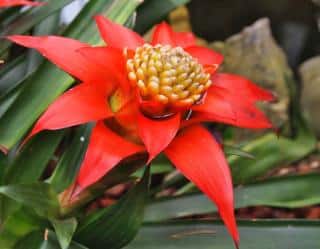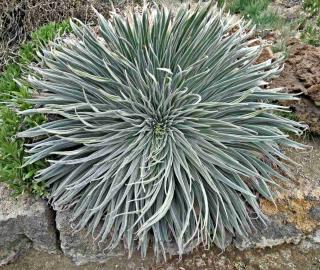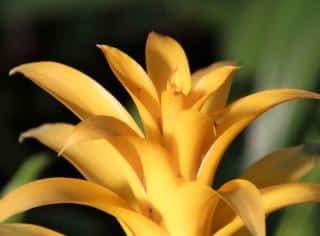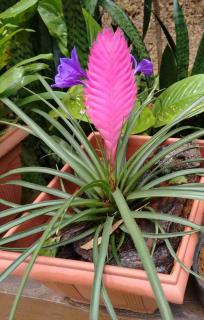

With its amazing colorful bloom girdled with a crown of deep green leaves, Bromelia does every thing it can to catch your eye. This exotic beauty comes in many shapes and varieties, and is often the most original indoor plant of our homes.
Native to Central and South America, belonging to the Bromeliaceae family, bromelia is an epiphyte plant. Just like orchids and Tillandsia, it grows on trees where aerial roots recover the water and nutrients it needs from runoff rainwater.
Over fifty different species exist, each with a surprising combination of shape, size, and color: red, yellow, orange, purple, double-colored… The most commonly available for use as indoor plants are Guzmania which bears star-shaped flowers and leaves; Vriesea which has a panicle-shaped flower; and Aechmea fasciata which comes in a surprisingly radiant pink color.
What they all have in common:
It must be said: whether it’s the sole plant in a room or clustered together with other brightly-colored varieties, bromelia definitely sets the tone in the dwelling.

Water the center of the rosette over a sink, letting it drip out entirely before setting the pot back in place.

Use soft water, either rainwater or filtered water.

Such a long-lasting flower is rare in the plant kingdom.
After the blooming, cut the dead flower out and keep the mother plant for its leafage.

A year later, you may have the chance of seeing a new flower form on your young bromelia!
Laure Hamann
Can I repot Bromelias in ordinary top soil from the garden centre?
Hello Barry, yes but the key is drainage. These plants hate soggy soil. It’s important to increase drainage to the point that when pouring water in the plant, the pot “leaks” excess water before you can count to 10. A good way to do this is to add clean sand, pebbles, gravel or bits of bark and such in your soil mix.
If you’re planting in the ground, not in a pot, a good way forward in addition to the tips above is to mound the soil up where you plant it. Excess rain can then drain outwards to the side.